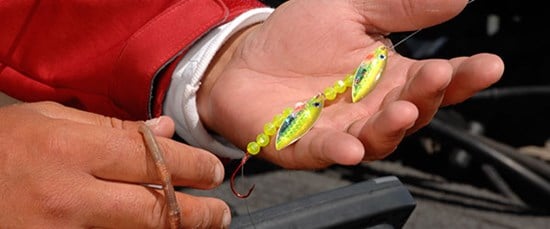
DO YOUR HOMEWORK
Before going onto a lake with fishing tackle for the first time, learn as much about the water as possible from local bait shops, fishing guides, resort owners, natural resource officials, lake surveys and by asking questions of other fisherman. Buy a contour map of the fishing area and study it prior to going on the lake, and watch where other boats are congregated. Concentrate your fishing efforts on the lake that is known to contain a good population of the species you wish to pursue, and chose the time of year the lake is known to yield its best catches.

LAKE TYPES
Our game fish swim in many different lake types in the Northland. Certain species thrive in rivers, lakes and reservoirs because special conditions are present for their existence. Rivers are the most prolific, and produce the widest variety of gamefish species. The large shallow sand bottom lakes and bays are normally best suited for walleye & perch, while the shallow weedy lakes and bays are better suited for Largemouth Bass, Panfish and Northern Pike. In the larger Canadian glacier lakes that are predominantly deep and rocky . . . Crappie, Walleye, Lake Trout, Smallmouth Bass, Northern Pike and Muskie all have certain niches and areas that they dominate and thrive in!

PROPER EQUIPMENT
The fishing equipment you choose will often represent the difference between a mediocre or a truly successful day on the water. When shopping for fishing tackle, always buy the best you can afford. Make sure your rod, reel & line match up for a comfortable and balanced fit. Choosing the right fishing lure is not as complicated as it might appear. Most fishing lures are meant to represent natural baits that fish feed on. Many lure makers also try to tripper a positive response. Lure types can be broken into five basic categories . . . JIGS, RIGS, SPINNERS, SPOONS & PLUGS.

ELECTRONICS
Practical use of electronic fish finding devices will enhance your fishing success tremendously! Flashers, liquid crystal, video graphics & underwater cameras are your eyes below the water, and show in detail depth, contour, bottom type, baitfish . . . and your targeted gamefish! Compasses and Global Positioning Systems (GPS) aid in navigation, and help pin-point "hot spot" fishing areas.

BEST TIME TO FISH
The best time to go fishing is whenever you can, but if you want to increase your fishing success as far as time is concerned, I have a few suggestions. First of all, "pick your days if possible, and stay away from 'cold fronts', or days when the air temperature drops sharply and the winds blow briskly from any direction that include North!"
Weather systems play a major role in fish activity, so if possible "choose the warm days with partly cloudy skies and moderate winds that blow from any direction that includes South! Fish the early morning and late evening hours on those clear bright days when the sun's rays are most direct. Also, take advantage of the annual season's fishing peaks and migrations. And lastly, watch the birds and animals. When they are out and actively feeding, the fishing will usually be good!
As a rule . . . cloudy days are better than clear days, & warm days are better than cool days. Windy days are also better than calm days! Also remember . . . "When the wind's from the west . . . the fish bite the best. When the wind's from the east . . . the fish bite the least! When the wind's from the south . . . the hook goes right into the fish's mouth!"

FISH ARE PREDICTABLE
You must search for fish like you hunt for game. Find fishing patterns by using logic, reasoning, experience & by trial and error. "Timing is everything!" Fish have predictable feeding times. These periods change with the seasons, and are affected by weather & light levels. Be observant and vary your controls until you are successful . . . then stick with them! Good fishing patterns often result in limit or near limit catches!

